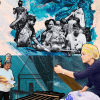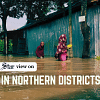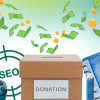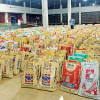Parts of Bangladesh have been devastated by floods recently, leaving residents vulnerable. Access to clean, safe drinking water is one of the biggest concerns during these times. Water must be purified before consumption as contaminated water sources can cause outbreaks of waterborne diseases. We have listed some easy and effective ways to ensure safe drinking water in flood-affected areas.
Water filtration with cloth
In areas affected by the flood, where modern water purification methods may be out of reach, it is advisable to start by filtering water through a clean piece of cloth. This method is easy and helps in cutting down on debris and sediments.
Choose the right fabric — Use a clean, tightly-woven fabric such as cotton or muslin. The cleanliness of the cloth is crucial here.
Strain the water — Slowly pour the collected water through the cloth into another clean container. The cloth acts like a strainer that traps large particles like soil, garbage and some microorganisms.
Repeat if necessary — If the water still looks dirty after clarifying it once, put it through another clean piece of cloth.
Boil the water — Although the use of clothes as filters will improve the quality of water, this does not guarantee complete safety. One should boil the filtered water before drinking.
Water purification tablets
An alternative way of purifying water could be using either tablets or drops. These tablets are rich in chemicals like iodine, chlorine dioxide, and chlorine that kill germs in water.
Follow the instructions — For every type of tablet or drop, there are specific instructions. Typically, you need to add a specified number of drops or tablets to each litre of water.
Mix and leave it — Stir the water after putting in the drops or tablets before allowing it to stay for at least half an hour. This waiting time makes it possible for chemicals to start the process of clarification.
Storage — Preserve this clean water in a container.








Comments